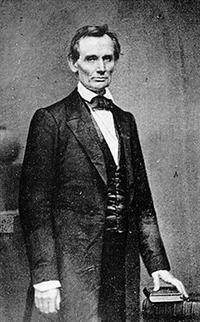Bleeding Kansas: Prologue
Bleeding Kansas was all about slavery, or was it? If you read Nicole Etcheson's book, Bleeding Kansas: Contested Liberty in the Civil War Era,she argues convincingly that the fundamental issue which led to Bleeding Kansas was one of the political liberties of whites:
- Pro-slavery southerners felt they had a right to own black slaves and that others were trying to take that liberty away from them.
- White settlers who did not own black slaves believed in following majority rule with the ballot box and that others were trying to take that liberty away from them.
But the rallying cry was a simple question – Would Kansas be a free state or a slave state? Until 1854, the answer to this question was preordained.
When the country's founding fathers were drafting the Constitution, the issue of slavery was too controversial to be resolved during the Constitutional Convention. The original Constitution contained four provisions tacitly allowing slavery to continue for the next 20 years. This compromise was necessary to bring about the ratification of the Constitution by the States. They would have 20 years to resolve the difficult issue.
But no one was able to design a resolution to the slavery issue in the next 20 years. The United States was undergoing a massive territorial expansion as territories were being formed out of the Louisiana Purchase. There was contention over which of the new territories would allow slavery and which would not. So the country's leaders worked out another compromise. The Missouri Compromise of 1820 defined which of the western territories would permit slavery and which would remain free. Missouri would be admitted as a slave state and Maine would be admitted as a free state. The balance of power in the US Congress would be maintained. But the legislation gave the Federal government the authority to decide which territories could allow slavery and which could not.
The next time this issue cropped up was following the Mexican War. Once again the United States was about to undergo a massive territorial expansion. There was a lot of contentious debate in the Congress about which territories would allow slavery and which would not. The Compromise of 1850 was a collection of bills that once again put off resolving the issue of slavery in the United States. In this compromise...
- California was admitted as a free state.
- The territories of New Mexico and Utah were organized under the rule of popular sovereignty.
- The Fugitive Slave Act was passed, requiring all U.S. citizens to assist in the return of runaway slaves.
Things calmed down for a few years until there was a bill to formally organize the Nebraska Territory consisting of lands west of Iowa and Missouri. Once again there was contentious debate about whether the Nebraska Territory would be slave or free. Illinois Senator Stephen Douglas became the architect of the Kansas-Nebraska Act. It created the territories of Kansas and Nebraska, repealed the Missouri Compromise of 1820, and allowed settlers in those territories to determine if they would allow slavery within their boundaries.
 Four years later, Abraham Lincoln would argue that the issue of slavery could no longer be put off and had to be resolved:
Four years later, Abraham Lincoln would argue that the issue of slavery could no longer be put off and had to be resolved:
“A house divided against itself cannot stand.' I believe this government cannot endure, permanently, half slave and half free. I do not expect the Union to be dissolved — I do not expect the house to fall — but I do expect it will cease to be divided. It will become all one thing or all the other.
Either the opponents of slavery will arrest the further spread of it, and place it where the public mind shall rest in the belief that it is in the course of ultimate extinction; or its advocates will push it forward, till it shall become alike lawful in all the States, old as well as new — North as well as South.”
With the passage of the Kansas-Nebraska Act in 1854, the nation soon discovered it would no longer be able to put off the issue of slavery. Bleeding Kansas would become a key focal point for the entire country as it struggled to come to grips with the issue of slavery.
Back: Bleeding Kansas Timeline
Next: Kansas Settlers
